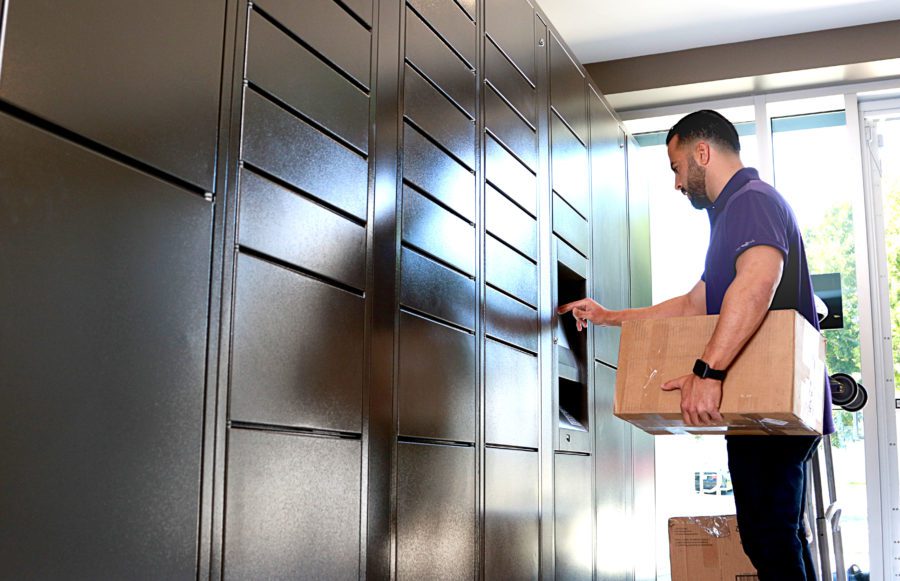
Retail
Omni Talk: Ask An Expert | Social Media’s Impact on the New Retail Landscape
Written by: Jordan Byrd
4 Min Read
Published: January 7, 2022
Updated: April 21, 2023
This post originally appeared on Omni Talk. To read more content like this, subscribe to Omni Talk.
The shopping experience is a challenge right now. The retail industry is caught in the throes of supply chain bottlenecks, labor shortages, and material scarcity – all while consumers are really starting to embrace social media for online shopping. Retailers must step up and meet shopper expectations, especially when it comes to social media, versus simply relying upon their stores and websites.
The Gap Between Inspiration and Conversion on Social Media
There’s currently a significant gap between what consumers want and what brands deliver on social media. Consumers want discovery, product recommendations, entertainment, and human interaction. Retailers, on the other hand, see social media as an advertising vehicle and expect immediate and a measurable return on investment.
Taking a deeper dive into the numbers demonstrate the significance of this gap. “Some 35% of consumers overall – and almost half of Gen Z and Millennials – actually prefer to purchase from a brand on social media rather than on the actual website,” explains Jamie Gilpin, Chief Marketing Officer of Sprout Social. But only 73% of companies offer products for sale on social media platforms and it is much lower (57%) for small businesses.
Gartner data paints a more disappointing picture. While a quarter of US consumers find inspiration about products on social media, only 10-11% are actually purchasing through social platforms, according to its data. As a retail channel, social commerce accounts for a mere 4% of total sales for brands across various industries!
Four Strategies for Improving Social Commerce
It’s important to note the difference between social media marketing and social commerce. Whereas social media sends visitors to a retailer’s website, social commerce allows shoppers to checkout directly on the platform. With that in mind, here are four strategies retailers can use to improve their social commerce experience.
- Create a Frictionless Experience – Every extra click reduces the likelihood of a sale. One-click shopping is the future of social commerce. Note: this should also encompass the consumer’s choice of delivery options, including home delivery, curbside, BOPIS, etc.
- Start a Dialogue – Social media selling means moving away from a monologue and towards a two-way dialogue with consumers. Retailers must identify and respond to mentions on social media via comments, direct messages, and more. Good social engagement translates into responding to these types of messages within 24 hours and with a human component. After all, nearly 80% of consumers surveyed stated that they are likely to buy from the brand eventually if they have a positive experience initially.
- Sell Products through Stories – Although ephemeral, stories can boost sales as they cut through the clutter of permanent posts. Further, stories tend to pack an emotional punch leading to higher impact.
- Find the Right Influencers – Whether it’s a celebrity, thought leader, or blogger, influencers have a positive ROI. Businesses are making an average of $5.20 for every $1 spent on influencer marketing.
Why Brick & Mortar Still Matters
Consumers want instant gratification regardless of the channel they use to shop. And they’re using quite a few. According to Salesforce VP and GM of Retail, Rob Garf, shopping journeys can now involve an average of nine different touchpoints.
This makes creating a seamless same-day delivery, BOPIS, or store experience integral both in terms of fulfilling e-commerce orders and in terms of customer experience. As John Mulligan, the COO of Target notes: “Shipping a package from a store rather than a fulfillment center is 40% cheaper.” Not surprisingly then that for the first time since 2017, retailers are expected to open more stores than they close.
As such, BOPIS and Buy Online, Pick-up in Locker (BOPIL®) are becoming mainstream terms for both shoppers and retailers alike. Retailers adore these services as 61% of customers make an incremental purchase just by virtue of entering the store. However, BOPIL has a competitive advantage because it takes on average less than thirty seconds to retrieve an order, and customers whose wait times are two minutes and under are four times more likely to purchase again.
Retailers also see physical stores as a way of merging online and in-store experiences. Levi Strauss & Co. is planning to open 100 “next generation” stores in the U.S. in the next three to five years. They merge digital touches such as mobile checkout with customization so that shoppers can personalize their jeans or T-shirts.
Dick’s Sporting Goods is also doubling down on its in-store footprint by adding over 800 newer concepts including House of Sport, Public Lands, and Golf Galaxy stores that have interactive features such as batting cages, rock-climbing walls and putting greens.
The future of retailing is in hybrid/omnichannel retailing. Of course, the most overlooked channel is social media whereby consumers are spending more time, but not an amount of their shopping dollars. Savvy retailers must convert their content and response times to correlate with social visitors’ expectations in order to reap more sales across all shopping channels.
About Omni Talk:
Omni Talk is the retail blog for retailers, written by retailers. Chris Walton and Anne Mezzenga founded Omni Talk in 2017 and have quickly turned it into one of the fastest growing blogs in retail. They have a loyal following on their blog and on LinkedIn, comprised of hard core retail junkies across all walks of life – retailers, tech companies, CPGs, and consumers. Their work is seen by as many as 2 million people each month on Forbes and across other retail outlets, like the Robin Report and Retail Dive as well. Learn more by visiting www.omnitalk.blog or by subscribing to their e-mail newsletter.



